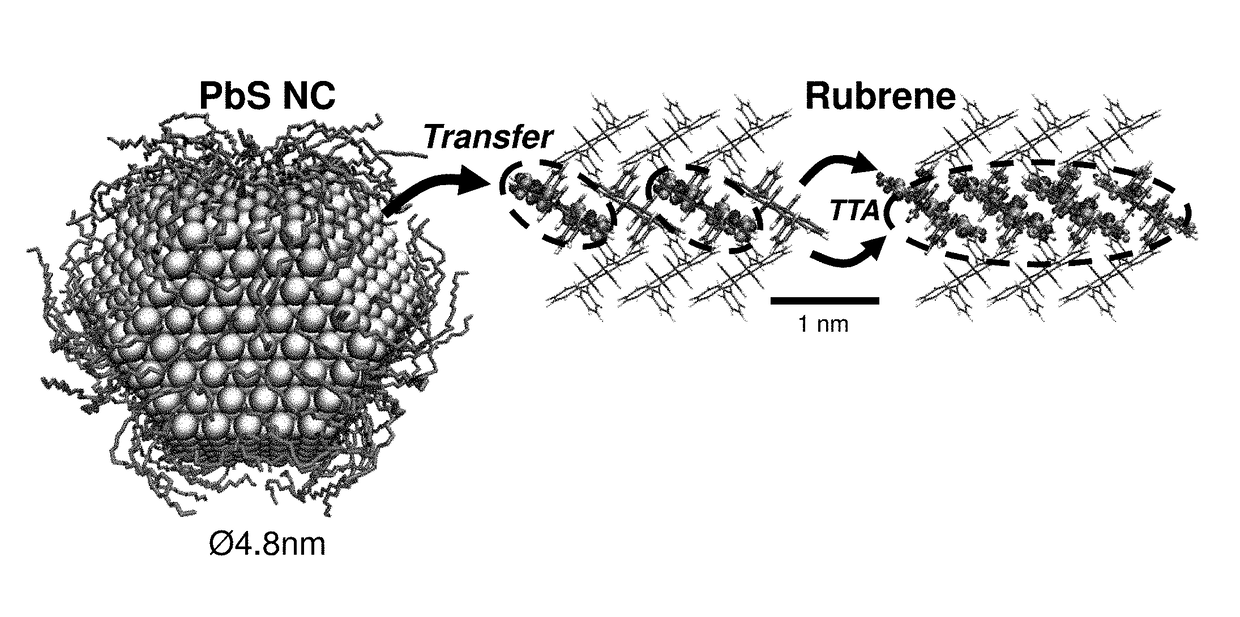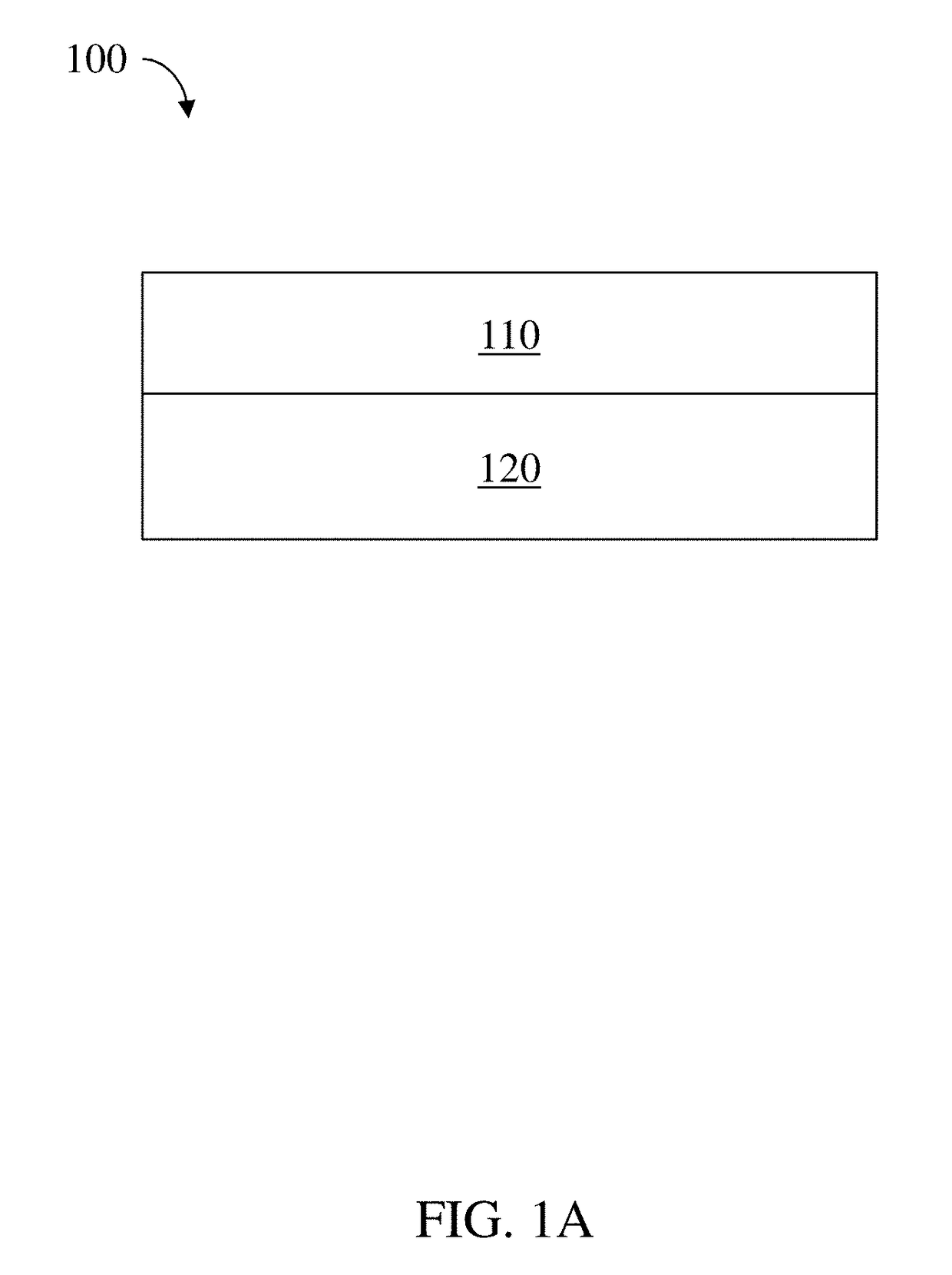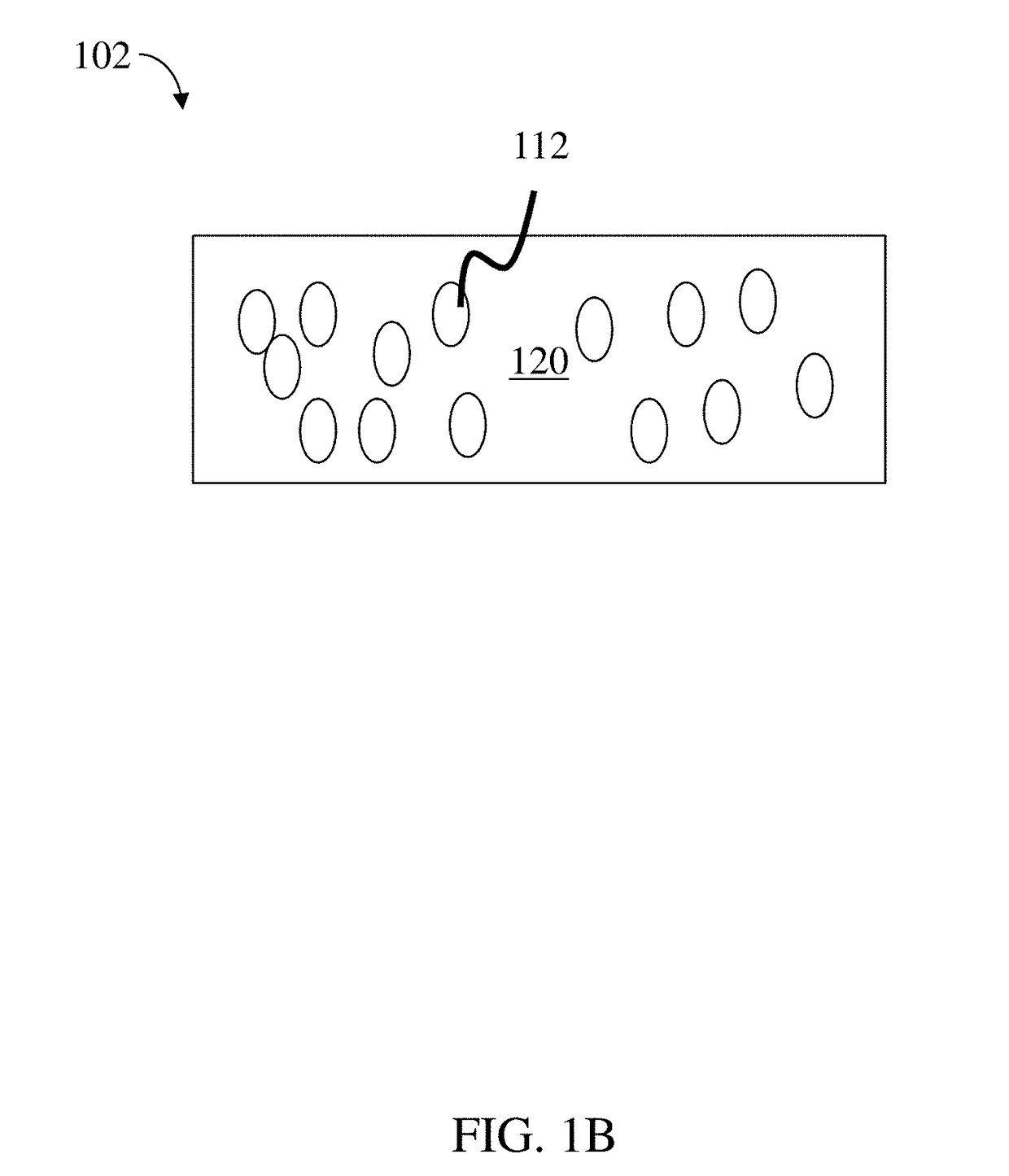Methods and compositions for the upconversion of light
a technology of composition and light, applied in the field of composition and light upconversion, can solve the problems of inability to find stable sensitizers in this class of materials, inability to coherent, broad-spectrum excitation low-energy devices, and inability to achieve high-intensity excitation
- Summary
- Abstract
- Description
- Claims
- Application Information
AI Technical Summary
Benefits of technology
Problems solved by technology
Method used
Image
Examples
example 1
[0081]The following example describes the synthesis of nanocrystals, according to some embodiments.
[0082]Lead sulfide nanocrystals (NC) were synthesized as described below. Specifically, lead(II) acetate trihydrate (11.38 g, 30 mmol), 1-octadecene and oleic acid (varied quantities as designated by Table 1) were degassed in a 1000 ml three-neck round-bottom flask at 100° C. until the solution turned clear. The solution was cannula transferred to a nitrogen-flushed 1000 mL four-neck round-bottom flask equipped with a mechanical stirrer. Under nitrogen flow, the solution was heated to the injection temperature (see below), at which point a mixture of bis(trimethylsilyl)sulfide (3.15 ml, 15 mmol) in 1-octadecene (150 ml) was rapidly injected. The resulting nanocrystals were transferred to a nitrogen glovebox where flocculation was performed three times with anhydrous butanol, methanol, and / or acetone. The nanocrystals were redispersed in hexanes or octane.
[0083]
TABLE 1Quantity inFirstre...
example 2
[0084]In the following example, a device containing an article as described herein is investigated.
[0085]A device was fabricated with 1010 nm absorption peak PbS nanocrystals with oleic acid ligands in a bilayer with 80 nm of rubrene with tetraphenyldibenzoperiflanthene doped in at 0.5 wt %. The excitation light was generated from a SuperK Supercontinuum device and fed into a monochromator. The emission was captured by a SP300i spectrometer after the light was passed through a 700 nm short pass filter, as is plotted in FIG. 2. The data demonstrates upconversion from 1000 nm to <600 nm, a relatively large wavelength change for triplet-triplet annihilation based upconversion.
[0086]The magnetic field effect of the device is plotted in FIG. 3. The magnetic field effect on fluorescence was measured and the light was filtered such that only tetraphenyldibenzoperiflanthene emission was measured. The sample was excited by an 808 nm laser. The magnetic field effect was consistent with triple...
example 3
[0087]In the following example, articles as described herein are investigated.
[0088]The emission spectra from two samples are shown in FIG. 4, demonstrating the efficiency enhancement of rubrene doped with tetraphenyldibenzoperiflanthene in a film (dots / rubrene:DBP 5%). The dashed curve (dots / rubrene) is an upconversion device with PbS nanocrystals (dots) and rubrene only as the emitter. The solid curve (dots / rubrene:DBP 5%) is for a device mixing in tetraphenyldibenzoperiflanthene in the rubrene at 5 wt %, showing a 9.5× increase in emission as compared to rubene alone. The red curve contains no nanocrystals and showed no upconversion (as a control).
PUM
| Property | Measurement | Unit |
|---|---|---|
| average wavelength | aaaaa | aaaaa |
| average wavelength | aaaaa | aaaaa |
| triplet energy | aaaaa | aaaaa |
Abstract
Description
Claims
Application Information
 Login to View More
Login to View More - R&D
- Intellectual Property
- Life Sciences
- Materials
- Tech Scout
- Unparalleled Data Quality
- Higher Quality Content
- 60% Fewer Hallucinations
Browse by: Latest US Patents, China's latest patents, Technical Efficacy Thesaurus, Application Domain, Technology Topic, Popular Technical Reports.
© 2025 PatSnap. All rights reserved.Legal|Privacy policy|Modern Slavery Act Transparency Statement|Sitemap|About US| Contact US: help@patsnap.com



